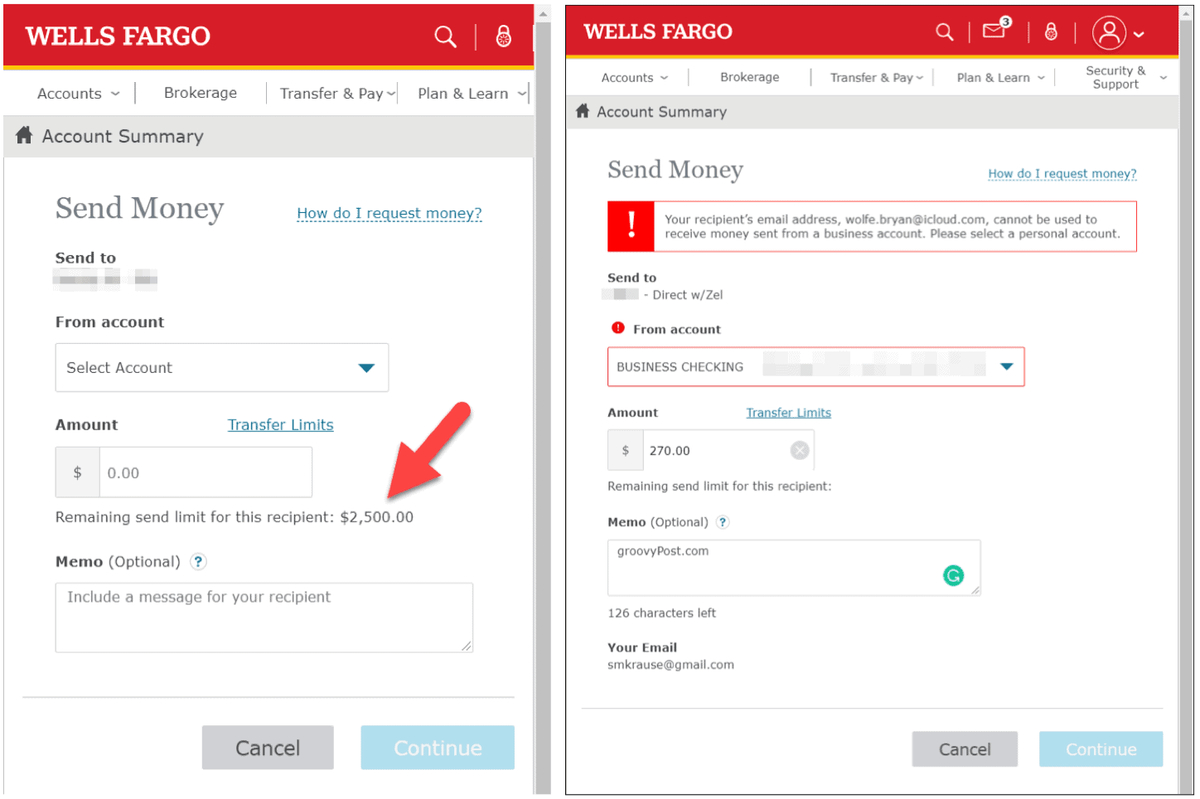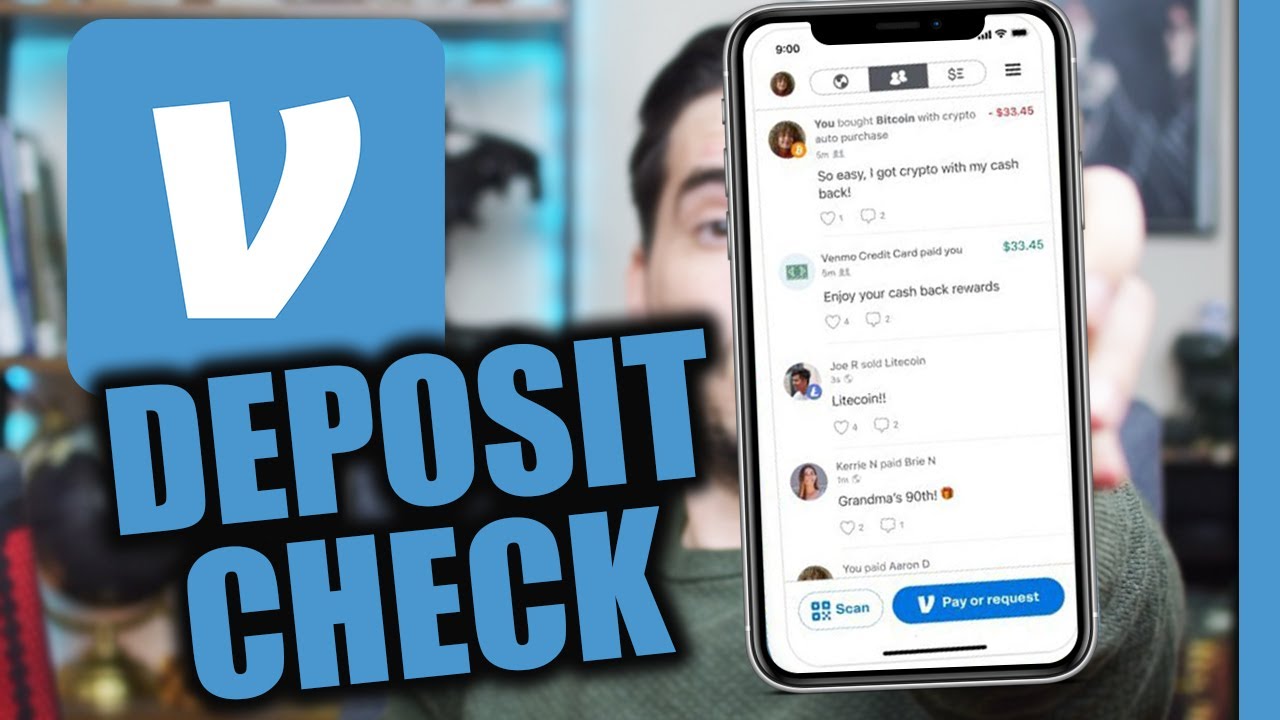Introduction
In the world of banking and finance, it’s important to be familiar with the various terms and acronyms that are commonly used. One such term is NSF, which stands for Non-Sufficient Funds. If you’ve ever had a check bounce or a payment declined due to insufficient funds in your account, then you’ve likely encountered NSF.
NSF refers to the situation where there isn’t enough money in a bank account to cover a transaction or payment request. This can happen for a variety of reasons, such as a miscalculation of available funds, unexpected expenses, or even delays in the processing of deposits. When this occurs, the bank will refuse to complete the transaction and will often charge a fee for the insufficient funds.
Understanding how NSF works in banking is essential for anyone who has a bank account or engages in financial transactions. In this article, we will explore the concept of NSF in more detail, discussing how it works, the fees and penalties associated with it, and how to avoid NSF charges. We will also touch upon the consequences of having insufficient funds in your banking account and how NSF applies to different types of bank accounts. Additionally, we will explore the option of overdraft protection and provide insights on disputing NSF charges, if necessary.
By the end of this article, you will have a comprehensive understanding of what NSF means in banking and how it can affect your financial transactions. Let’s dive in and explore the world of NSF and its implications in the banking industry.
Definition of NSF
Non-Sufficient Funds, commonly known as NSF, is a term used in the banking industry to describe a situation where there are not enough funds in a bank account to cover a transaction or payment request. When a transaction is initiated, such as writing a check or making an electronic payment, the bank will check the available balance in the account. If the account does not have sufficient funds to cover the transaction, it will be declined and marked as NSF.
NSF can occur for various reasons, including insufficient deposits, unexpected expenses, or errors in managing finances. This can lead to bounced checks, declined payments, and additional fees imposed by the bank. It’s important to note that NSF can occur in any type of bank account, including checking accounts, savings accounts, and even business accounts.
When a transaction is flagged as NSF, the bank notifies the payee or the intended recipient of the insufficient funds. The payee may attempt to deposit the check again after a few days or seek an alternative method of payment to ensure that funds are available. In some cases, the bank may still process the payment despite insufficient funds, resulting in an overdraft. This is called an overdraft NSF.
It’s important to understand that NSF is not a reflection of your creditworthiness or financial status. It simply means that at the time of the transaction, there were not enough funds available to cover it. NSF should be taken seriously, as it can have financial implications and impact your banking relationships.
In the following sections, we will explore how NSF works in banking, the fees and penalties associated with it, and how to avoid NSF charges. We will also discuss the consequences of having insufficient funds in your account and how NSF applies to different types of bank accounts. Let’s continue our journey into the world of NSF in banking.
How Does NSF Work in Banking?
When a transaction is initiated, whether it’s a check, electronic payment, or debit card transaction, the bank verifies if there are sufficient funds in the account to cover the requested amount. If there are enough funds, the transaction is completed, and the account balance is reduced accordingly. However, if the account does not have enough funds, the transaction is flagged as NSF, and the bank will decline the payment.
Typically, when a transaction is marked as NSF, the bank will notify the account holder of the insufficient funds and may charge a fee for the declined payment. The payee or recipient of the payment will also be notified, and they can choose to resubmit the payment on a later date or request an alternative form of payment.
In some cases, a bank may still process the payment despite insufficient funds, resulting in an overdraft. This typically happens if the account holder has authorized the bank to cover transactions that exceed the available balance through an overdraft protection program. While this can avoid immediate inconveniences, it can still accrue fees and interest charges.
It’s important to note that the bank’s policies and fees for NSF vary, so it’s crucial to review the terms and conditions of your specific banking institution. Some banks may charge a flat fee for each NSF transaction, while others may charge a fee per day that the account remains overdrawn.
Additionally, some banks offer overdraft protection programs, which can automatically transfer funds from another linked account, such as a savings account or line of credit, to cover an NSF transaction. These programs can help prevent declined payments and potential fees, but they may also come with their own set of fees and interest charges.
Now that we understand how NSF works in banking, let’s delve into the fees and penalties associated with NSF in the next section. Understanding these costs can help you make informed decisions and avoid unnecessary charges.
Fees and Penalties for NSF
When a transaction is marked as NSF, banks usually charge a fee for the declined payment. The specific fee amount can vary between banks, so it’s important to review the terms and conditions provided by your bank. Commonly, NSF fees range from around $20 to $40 per transaction. These fees can quickly add up if multiple transactions are declined due to insufficient funds.
In addition to the initial NSF fee, banks may also impose daily fees for each day that the account remains overdrawn. This means that if you do not replenish your account to cover the outstanding balance, you could accumulate additional fees. These daily fees can vary and are often a fixed amount ranging from around $5 to $10 per day.
It’s crucial to monitor your banking activity regularly to avoid overdrawing your account and incurring NSF fees. Keep track of your deposits, withdrawals, and scheduled payments to ensure that you have sufficient funds available. Utilize tools such as online and mobile banking, as well as automated alerts, to stay on top of your account balance and receive timely notifications regarding low balances or potential NSF transactions.
Some banks offer overdraft protection programs as a means to avoid NSF fees. These programs automatically transfer funds from another linked account, such as a savings account or line of credit, to cover an NSF transaction. While this can provide temporary relief and prevent declined payments, it’s important to note that overdraft protection programs may come with their own set of fees and interest charges.
It’s necessary to understand and compare the fees and penalties associated with NSF across different banks before choosing a banking institution. By doing so, you can select an option that aligns with your financial needs and minimizes the potential impact of NSF fees on your account.
Now that we’ve explored the fees and penalties for NSF, let’s move on to the next section, where we will discuss strategies to avoid these charges.
Avoiding NSF Fees
Avoiding NSF fees requires proactive financial management and careful monitoring of your account balances. Here are some strategies to help you prevent NSF fees:
- Maintain a buffer: Keep a sufficient balance in your account to cover any upcoming payments or transactions. It’s a good practice to maintain a buffer of funds to account for any unexpected expenses or delays in deposit processing.
- Monitor your account: Regularly check your account balance to ensure you have enough funds available. Take advantage of online or mobile banking tools to conveniently monitor your account activity. Set up alerts to notify you when your balance is low or when a large transaction has been posted.
- Create a budget: Establish a realistic budget to manage your expenses effectively. This will help you allocate your funds appropriately and reduce the chances of overspending, which can lead to NSF situations.
- Schedule automatic payments: Set up automatic payments for recurring bills and expenses to ensure they are paid on time. Just make sure you have enough funds in your account to cover these payments.
- Keep a record of outstanding checks: If you write checks, keep track of them and make sure to deduct those amounts from your available balance. This will help you avoid the risk of inadvertently overdrawing your account.
- Opt for overdraft protection: Consider enrolling in an overdraft protection program offered by your bank. This can automatically transfer funds from another linked account to cover an NSF transaction. However, be aware of any associated fees and interest charges that may be incurred.
By implementing these strategies, you can reduce the likelihood of having insufficient funds in your account and incurring NSF fees. Remember, becoming proactive and disciplined with your finances is key to maintaining a healthy banking relationship and avoiding unnecessary charges.
In the next section, we will discuss the consequences of NSF and how it can impact your banking experience.
Consequences of NSF
Experiencing NSF can have various consequences that can impact both your financial well-being and your relationship with the bank. Here are some of the common consequences associated with NSF:
Financial Penalties: The primary consequence of NSF is the imposition of fees and penalties by the bank. As mentioned earlier, these fees can range from $20 to $40 per transaction, and additional daily fees may be applied if the account remains overdrawn. These fees can quickly accumulate, resulting in a substantial financial burden if not addressed promptly.
Negative Impact on Credit: While NSF itself does not directly impact your credit score, it can indirectly affect your creditworthiness. If the account remains unpaid and is sent to a debt collection agency, it can be reported to credit reporting agencies, which can lower your credit score and make it more challenging to obtain loans or credit in the future.
Additional Payment Difficulties: NSF can create a domino effect of payment difficulties. If a check or payment bounces due to insufficient funds, it can cause other payments to be delayed or declined. This can lead to late payment fees, penalties, or even damage to your relationships with service providers or creditors.
Loss of Banking Privileges: Repeated instances of NSF can result in the loss of certain banking privileges, such as the ability to open new accounts, secure loans, or access overdraft protection programs. Banks may consider a history of NSF as a sign of potential financial instability or risk.
Legal Consequences: In some cases, NSF can have legal ramifications. If you knowingly write fraudulent checks or engage in illegal activities related to your banking accounts, you could face criminal charges and legal consequences.
To mitigate the consequences of NSF, it’s important to take swift action. If you are aware of an NSF transaction, promptly deposit sufficient funds into your account to cover the shortfall. Communicate with the payee or recipient of the payment to arrange an alternative form of payment if necessary.
Furthermore, it’s crucial to address any outstanding fees or charges associated with NSF as soon as possible. Work with your bank to understand the specific fees incurred and negotiate any potential waivers or reductions, especially if it is your first instance of NSF.
In the next section, we will explore how NSF applies to different types of bank accounts, and the specific considerations for each.
NSF in Different Types of Bank Accounts
NSF can occur in various types of bank accounts, including checking accounts, savings accounts, and business accounts. While the general concept of NSF remains the same across these account types, there may be some differences in how they are handled. Let’s explore NSF in different types of bank accounts:
Checking Accounts: Checking accounts are the most common type of account where NSF occurs. These accounts are typically used for everyday transactions, such as writing checks, making debit card purchases, and initiating electronic payments. When a transaction is marked as NSF in a checking account, it can result in bounced checks, declined payments, and fees imposed by the bank.
Savings Accounts: Although savings accounts are primarily used for savings and not for daily transactions, it’s still possible to experience NSF in these accounts. This usually happens when funds are automatically transferred from a savings account to cover insufficient funds in a linked checking account. If the savings account does not have enough funds, the transaction may be declined or result in an overdraft in the checking account, triggering associated fees.
Business Accounts: Business accounts, particularly those used for small businesses or freelancers, can also encounter NSF situations. In these accounts, NSF can impact the smooth operation of the business, causing disruption in supplier payments, delays in payroll, or difficulties in meeting financial obligations. It’s crucial for business account holders to closely monitor their account balances and manage cash flow effectively to avoid NSF and its consequences.
Regardless of the account type, it’s important to be aware of the specific policies and fees related to NSF in your bank. Understanding the terms and conditions of your account will help you navigate NSF situations more effectively and minimize any potential negative impacts.
Now that we have explored NSF in different types of bank accounts, let’s move on to discussing the option of overdraft protection in the next section.
Overdraft Protection
Overdraft protection is a service offered by many banks to help account holders avoid NSF situations and the associated fees. This service provides a safety net by allowing transactions to be approved, even if there are not enough funds in the account to cover them. Instead of declining the transaction, the bank covers the shortfall by transferring funds from another linked account or extending a line of credit.
There are a few different forms of overdraft protection that may be available, depending on your bank and account type:
- Linked Accounts: In this type of overdraft protection, you can link multiple accounts together, such as a checking account with a savings account. If a transaction in your checking account exceeds the available funds, the bank will automatically transfer the necessary amount from your savings account to cover the shortfall.
- Line of Credit: Some banks offer overdraft protection in the form of a line of credit. If you don’t have enough funds in your account to cover a transaction, the bank will extend a line of credit to cover the shortfall. You’ll then be responsible for repaying the borrowed amount, along with any interest charged.
- Overdraft Protection Plans: Some banks offer specialized overdraft protection plans that allow you to opt-in to a program that covers transactions that would otherwise result in NSF. This can include both linked accounts and lines of credit to provide a broader safety net for your transactions.
While overdraft protection can provide a temporary relief from NSF situations, it’s important to understand that these services typically come with their own fees and interest charges. It’s essential to review and understand the terms and conditions of the overdraft protection being offered, including any associated costs.
If you choose to enroll in an overdraft protection program, it’s crucial to regularly monitor your account activity and ensure that you have sufficient funds to repay any borrowed amount. Over-reliance on overdraft protection can lead to a cycle of dependency and potential financial strain.
Consult with your bank to determine the specific options available to you and evaluate whether overdraft protection aligns with your needs and financial situation. Remember, overdraft protection should be used as a temporary solution, and it’s prudent to work towards maintaining a healthy account balance to avoid relying on it frequently.
In the next section, we will discuss how to dispute NSF charges if you believe they are inaccurate or unjustified.
Disputing NSF Charges
If you believe that an NSF charge on your account is inaccurate or unjustified, you have the right to dispute it. Here are the steps you can take to dispute NSF charges:
1. Review your account activity: Carefully review your account statements, transaction history, and any related documentation to understand the details of the NSF charge. Verify if the charge is indeed accurate and if you were properly notified of the insufficient funds.
2. Contact your bank: Reach out to your bank’s customer service or visit a branch in person to discuss the NSF charge. Explain why you believe the charge is incorrect or unfair and provide any supporting documentation or evidence. It’s crucial to remain calm and courteous during your conversation with the bank representative.
3. Request a refund or waiver: Ask the bank to refund the NSF charges or waive them as a gesture of goodwill. If you have a valid reason, such as a banking error or extenuating circumstances, the bank may be willing to work with you to resolve the issue. Providing documentation or proof to support your claim can strengthen your case.
4. Follow up in writing: If your initial conversation with the bank doesn’t resolve the dispute, send a written complaint to the bank’s customer service department. Clearly explain the issue, include any relevant evidence, and state your desired resolution. Keep copies of all correspondence for your records.
5. Escalate the complaint: If the bank does not respond or does not resolve the dispute to your satisfaction, you may consider escalating the complaint to a higher level such as a supervisor or manager. Some banks also have a dedicated dispute resolution department that you can contact.
6. Seek assistance from regulatory authorities: If you have exhausted all avenues of resolution with the bank and still believe the NSF charges are unjustified, you can file a complaint with the appropriate regulatory authority. These authorities oversee banking operations and can help mediate disputes between customers and financial institutions.
It’s important to note that each bank may have its own specific dispute resolution process, so be sure to familiarize yourself with your bank’s procedures. Remember to remain patient and persistent throughout the dispute resolution process, as it may take time to reach a satisfactory resolution.
In the next section, we will conclude our exploration of NSF in banking and summarize the key points discussed in this article.
Conclusion
Understanding NSF (Non-Sufficient Funds) is crucial for anyone with a bank account or those involved in financial transactions. NSF occurs when there are not enough funds in an account to cover a payment or transaction. It can lead to declined payments, bounced checks, and fees imposed by the bank.
In this article, we have explored the definition of NSF and how it works in the banking industry. We discussed the fees and penalties associated with NSF, as well as strategies to avoid these charges. It is essential to maintain a buffer, monitor your account, and create a budget to prevent NSF situations.
We also examined the consequences of NSF, including financial penalties, potential negative impacts on credit, additional payment difficulties, and possible restrictions on banking privileges. Being aware of these consequences emphasizes the importance of managing funds responsibly to avoid NSF situations.
We learned that NSF can occur in different types of bank accounts, such as checking, savings, and business accounts. While the concept of NSF remains the same, the handling and implications may vary across these accounts.
Overdraft protection emerged as an option to avoid NSF fees, providing a safety net by covering transactions even with insufficient funds. However, it’s crucial to understand the associated fees and interest charges and use overdraft protection responsibly as a temporary solution rather than relying on it continuously.
In the event of unfair or inaccurate NSF charges, it’s essential to know the steps involved in disputing them. By thoroughly reviewing account activity, contacting the bank, and following the appropriate dispute resolution process, you can seek a fair resolution to your complaint.
In conclusion, understanding NSF is vital for maintaining a healthy banking relationship and avoiding unnecessary fees and penalties. By managing your finances responsibly, regularly monitoring your account, and exploring the options available, you can minimize the risk of NSF and ensure a smooth and hassle-free banking experience.

























